Editor’s note: Follow all of the action and updates on our special Monterey Car Week page.
The shockingly aerodynamic, highly innovative Citroën DS 19 that thrilled the crowds at the 1955 Paris Motor Show and brought 80,000 orders during the first week also gave renowned French coachbuilder Henri Chapron a vision of how to relaunch his custom-body business.
The new Citroën DS was the greatest car in existence, he reasoned, so why not make it the template for his coachbuilding efforts?
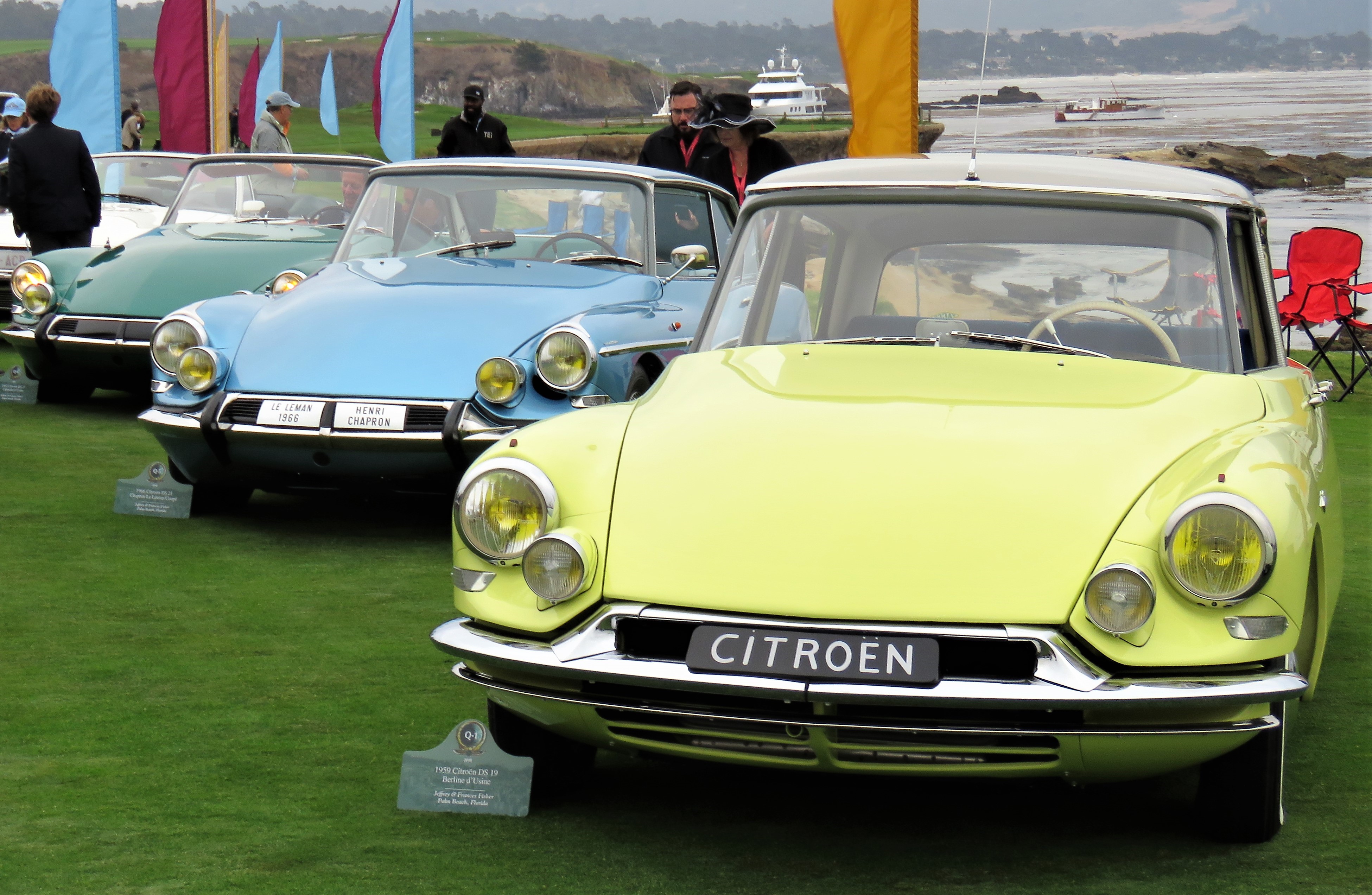
The fruit of his artistic labors were on display Sunday at the Pebble Beach Concours d’Elegance with the special class Postwar Custom Citroën, the first time that the storied French marque has been featured in the famed 68-year-old California event. The unusually styled cars also were featured on the poster for the Pebble Beach Tour d’Elegance.
The Citroëns, including an immaculate factory-spec 1959 DS 19 sedan to provide a baseline, were on display. Most of the Chapron cars were DS 19s and later DS 21s, but there was also a sporty 1972 Citroën SM Chapron Mylord Cabriolet, a rare conversion of the Maserati-powered SM fastback coupe.
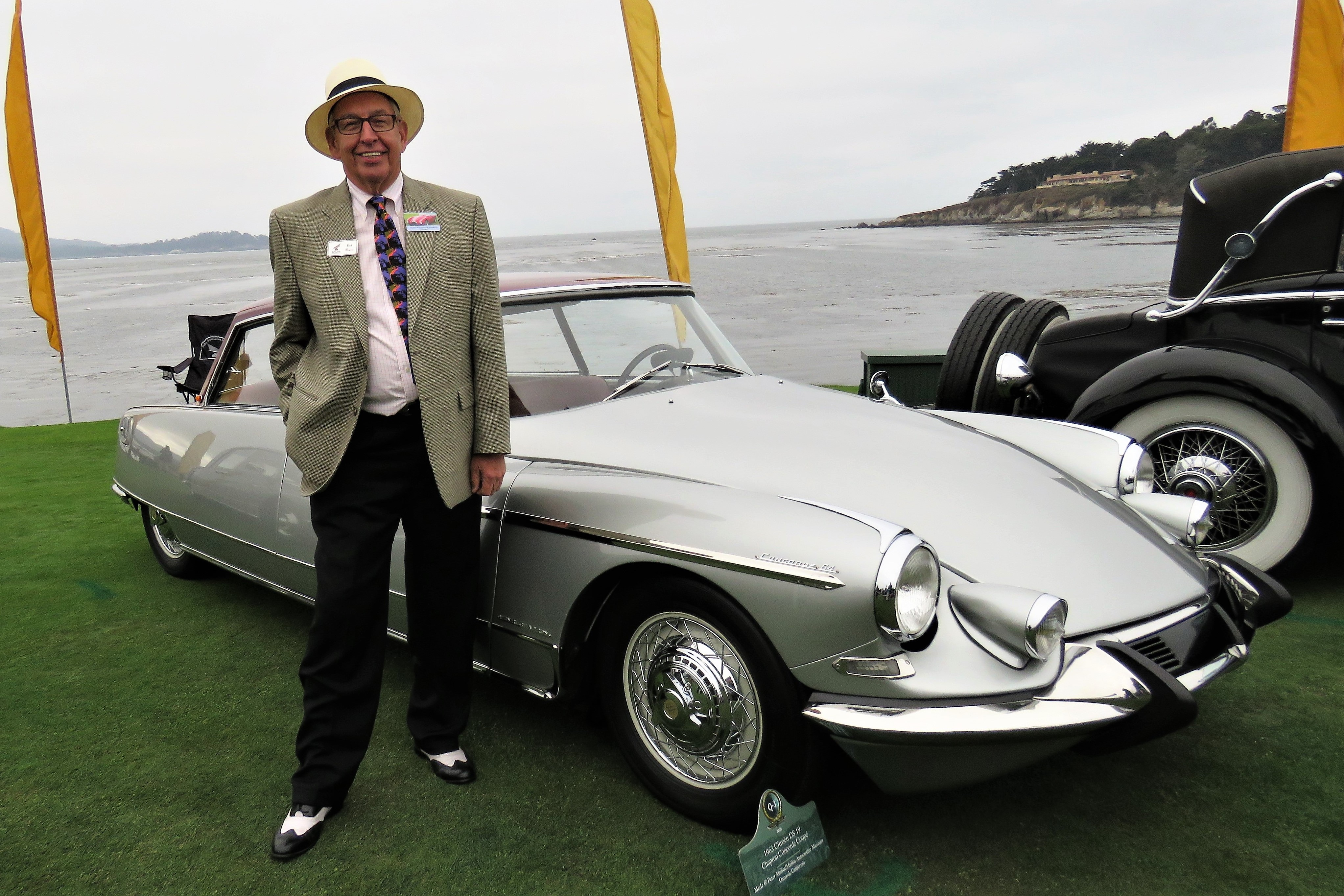
The Mullin Automotive Museum, whose founder Peter Mullin focuses on the great cars of France, sent a couple of its Chapron-enhanced cars for the concours.
Standing with one of those cars, a 1963 DS 19 Chapron Concorde Coupe, Rick Eberst from the Oxnard, California, museum answered a steady stream of questions from spectators about the odd-looking cars – they are somewhat alien to most Americans since Citroën stopped selling its vehicles here in 1973.
Eberst regaled the listeners with information about the technology of the DS 19, much of it about Citroën’s unique hydro-pneumatic suspension system, but also about the work of Chapron in bringing his well-heeled customers coachbuilt versions to set them apart.
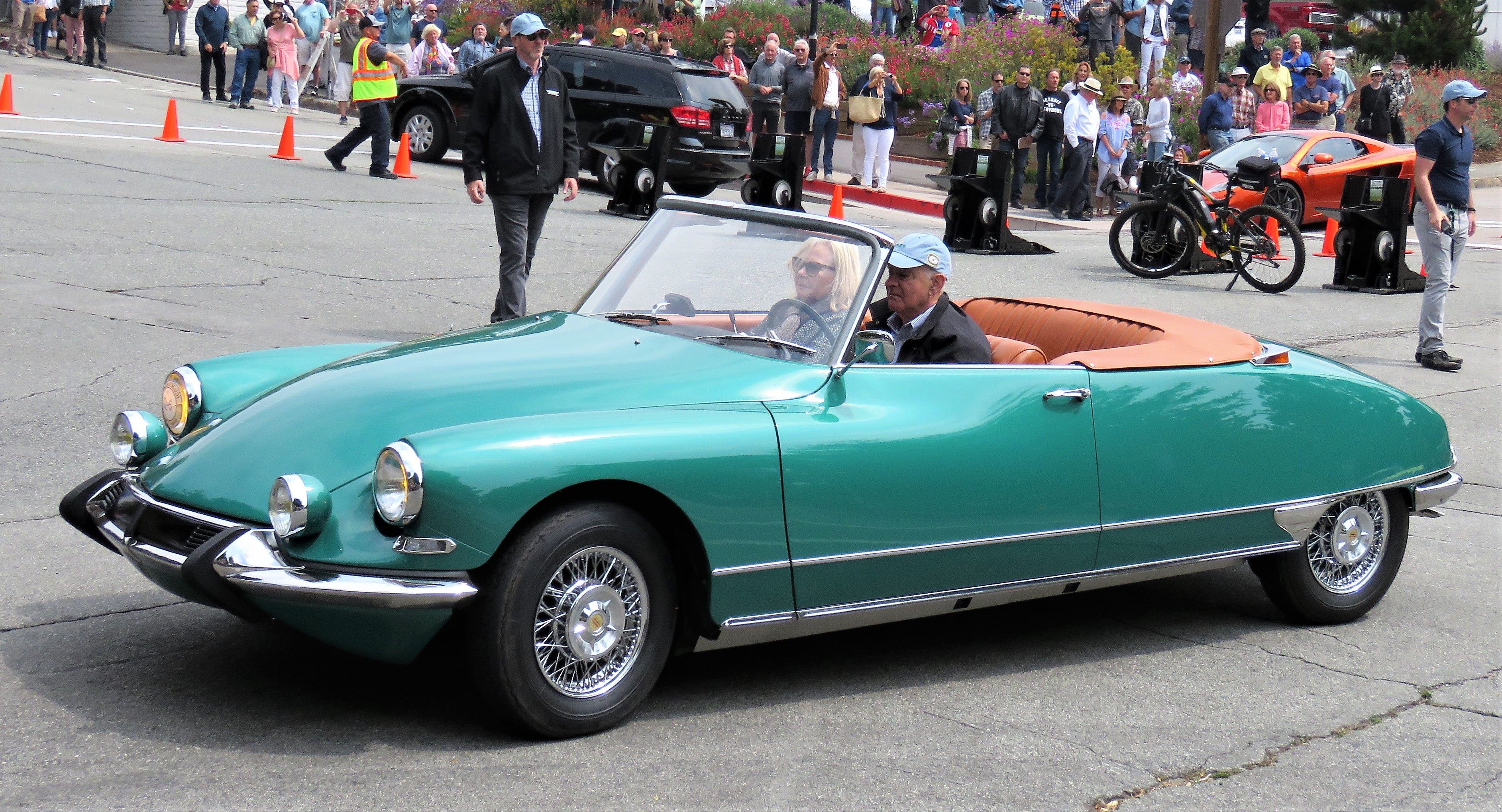
“Starting in 1960, Henri Chapron was trying to get back into business after the war and nobody was building bespoke cars anymore,” Eberst said. “He was trying to do something, and there was no money to do it, so he thought he would take the nicest car around, and that was the DS 19, and he was going to customize it.”
To get things under way, Chapron purchased a few of them and made one-off customs.
“They were all four-door sedans, so the first thing he would do is turn them into two-door sedans, customize the top with a little more room in the back,” Eberst said. “He would not change anything with the suspension, just kept everything with the hydro-pneumatics.

“But he did stuff on the inside and customized the outside, and he would come up with different kinds of wheel covers, and of course, put his name on it.”
But Chapron really hit his stride when he turned the DS 19 into a convertible, named La Croisette, that gained so much public attention that Citroën enlisted him to produce factory versions to be sold in the showrooms. They were later developed into the d’Usine and the well-known Décapotable cabriolets.
The best-of-class winner in the Postwar Custom Citroën group was an iridescent-blue 1966 Citroën DS 21 Chapron Le Leman Coupe, of which only 27 were made, owned by Jeffrey and Frances Fisher of Palm Beach, Florida. The refined roofline and sharply defined rear fenders lend a distinctively elegant look, and the headlights turn with the front wheels.
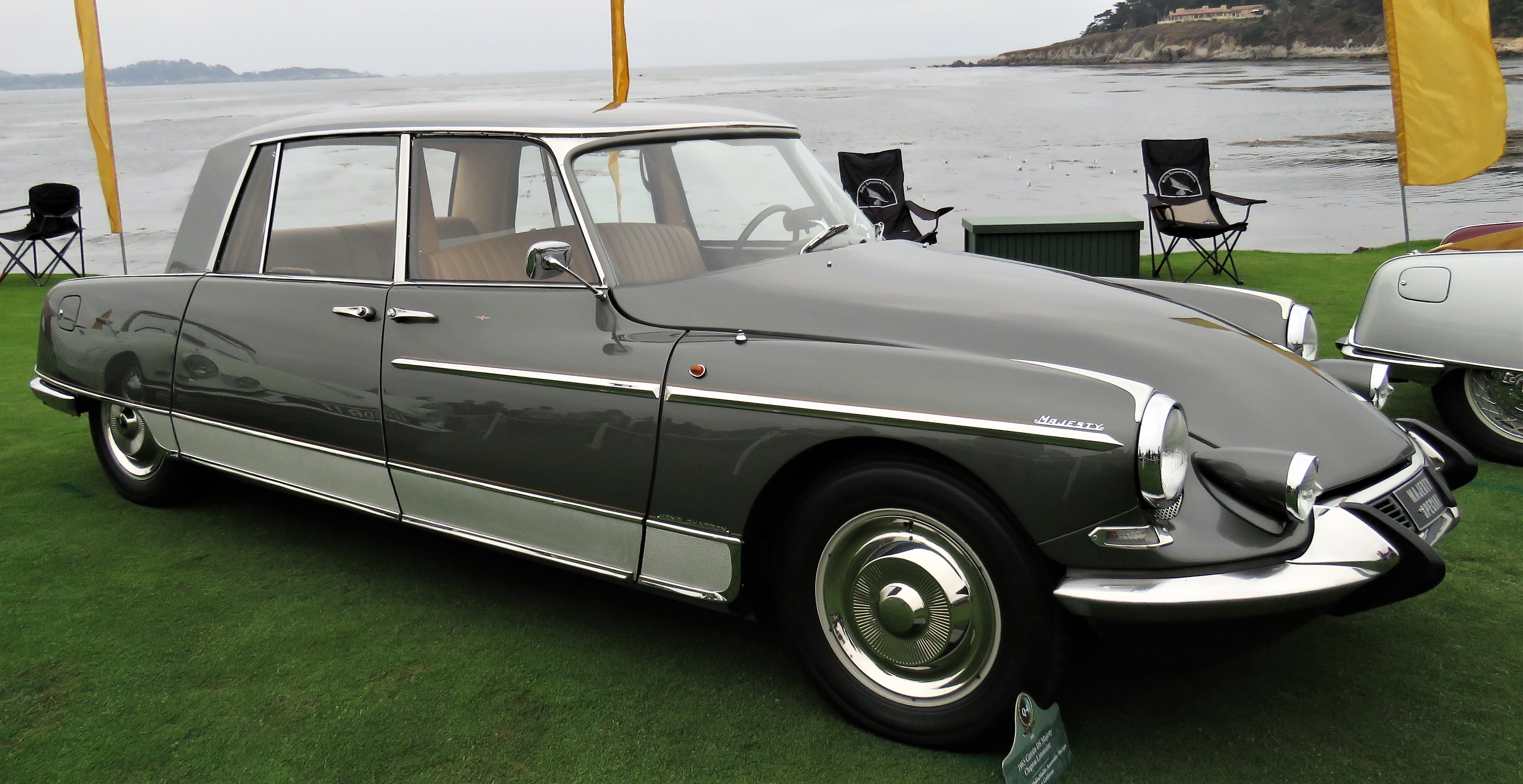
The other Mullin museum entry was a 1965 Citroën DS 19 Chapron Majesty Saloon, which Eberst said has an interesting back story.
“This car was called the Majesty, and there were 12 of those,” he said. “This particular one was a custom car that Henri did for a customer named Rene Gaston-Dreyfus, who was a wealthy financier, and he was in a wheelchair. If you look carefully, you will see that there is a strap on the rear passenger side, and that was what he would use to get in.
“He left it four doors but he wanted the rear doors to be ‘suicide’ doors (rear-hinged) so that he could get in and out better. He ordered about 27 different (custom) things, including the special paint that you see on it.”

The hydro-pneumatic suspension is a signature feature of the Citroëns, a system that connected all four wheels with a hydraulic system that would provide dampening as well as self-leveling. Each wheel has a sphere filled with the hydraulic fluid and topped with nitrogen gas to provide a “floating on air” ride.
“So, it’s like driving on a cloud,” Eberst said.
The hydraulics also made the car extremely safe, he noted, allowing a driver to keep complete control in the event of a blowout, or even completely losing a wheel.
The advanced aerodynamics were another important innovation. Even though the cars are powered by a conventional 1.9-liter 4-cylinder engine that makes just over 90 horsepower, the fairly large cars can cruise effortlessly at highway speeds because of their low wind resistance.
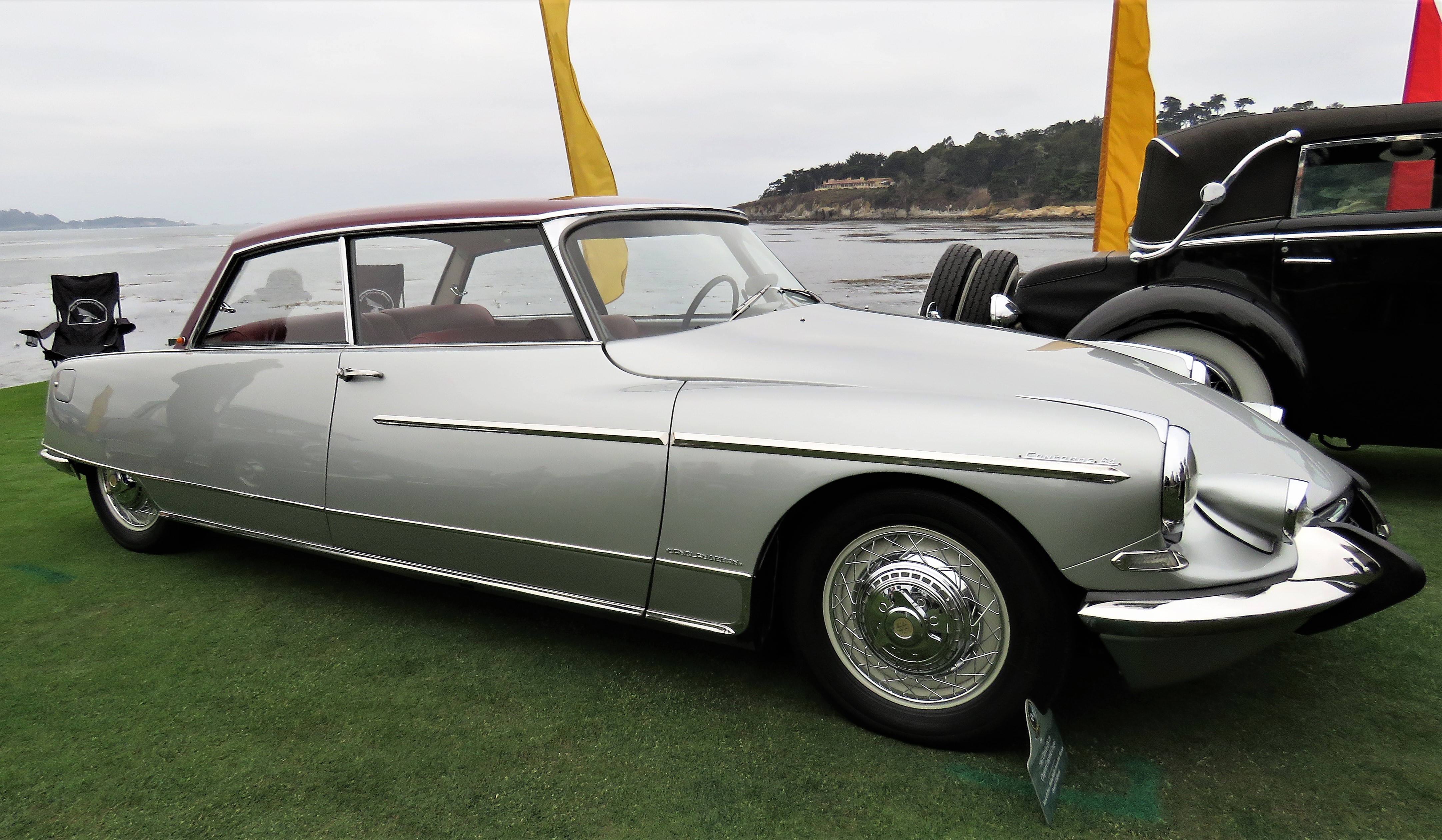
“They would get up to 140 kilometers (87 mph) because they were so aerodynamic,” Eberst said. “The cool thing about them is that the top speed and the cruising speed is the same thing because they are so aerodynamic.”
Henri Chapron had a good record of success with his custom Citroën coupes, sedans and convertibles, once again becoming famed among French auto enthusiasts and enlisted for special builds by the rich and powerful: Chapron created a custom long-wheelbase DS in 1968 for French President Charles de Gaulle.
Considering that DS in French is a homonym for “goddess,” by which the car became generally known in France, one has to admire Chapron’s temerity. Because really, how does one improve on a goddess?






Bob,
Great article on the mysterious Chapron models. I enjoy your articles very much and thank you for your knowledge and willingness to share it. I am not sure if you have visited “The Mullin” in Oxnard, but if you ever are in the area, I would like to meet you there and spend some time with Rick and you, at the facility.
As the incoming president of the Santa Barbara Woodie Club, I would like to be available to you for “all things Woodie”.
Thank you again.
Rick White
Thank you for this fine article. I have read it with pleasure. But there is nothing "mysterious" about hte cars Henri Chapron has created.
I would like to add some information, having written some articles on Henri Chapron and the Lorraine limousine, over here in The Netherlands.
Henri Chapron did not choose the Citroën DS because it was "the greatest car in existence", or "the nicest car around". The problem was that in post-war France, no cars were built anymore with a separate chassis, essential for a coachbuilder as a basis for his creations.
The only thing that came close to a car with a chassis was the DS. The bodywork can most easily be taken off, a procedure that takes less than two hours (the roof takes a bit more time).
What is left after this strip tease is the "coque", a very strong floor which in the front houses the egine/transmission and supension, and in the rear suspension and luggage room. The separation between engine compartment and passenger compartment is extrmely reinforced,
as are the "longerons", which carry the engine/transmission, front suspension and front wheel drive.
Six pillars are attached, on top of it the roof frame. Everything is spot welded, by hand.
The "coque" is a basis even bettter than the chassis. A Citroën DS, without any bodywork panel or piece of glass, can be driven as a regular DS. Thus, Henri Chapron could work from a basis he could freely create upon, hanging body panels how and where he pleased.
He did. Sometimes altering the pillar/roof construction, and taking the "coque" of the ID Break since it was more reinforced.
He also knew how to shop around. The Chapron Lorraine which I have driven sported a rear window from Rolls Royce. Rolls Royce colors you will find on many Chapron creations. And three different ventilation/heating systems. And NO radio. Vive la difference!
Well, so much about Henri Chapron and the DS. I may have used some terms which are not too familiar over there ("luggage room"), but it is a plaesure nevertheless to shed a little light on this subject.
Best regards,
Michel Verbeek
IJmuiden
The Netherlands